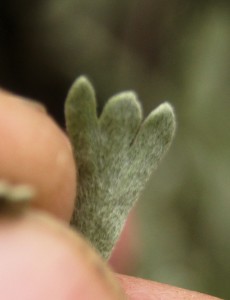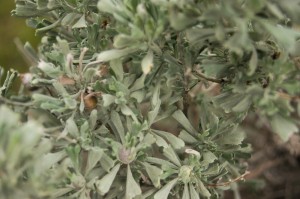
Big Sagebrush (Artemisia tridentata Nutt.) is an aromatic evergreen shrub from the Aster Family (Asteraceae). It is native to Intermountain West of North America, thriving in arid and semi-arid habitats ranging from cold deserts to dry mountain slopes. It is the dominant species in large swaths of its natural range.
It is a coarse shrub that combines a taproot and a shallow root system so that it can take advantage of both watertable water and any available surface water. Individual plants can live to be well over 100 years.

It has pale-yellow flowers and silvery-grey foliage. The leaves are between 3/8 to 1-1/4 inches long and have a three lobes on their tips.
The plant contains numerous aromatic and volatile oils (camphor, terpenoid oils, etc.) which gives it its characteristic odor and bitter taste. The bitter taste serves to discourage browsing by herbivores.

Habitat alteration is reducing its range. Big Sagebrush is not fire tolerant and destruction of native grasses and herbs predominantly by overgrazing creates conditions for fire which in turn creates an opening for invasives such as Cheatgrass to takeover. This makes it difficult for Big Sagebrush to re-establish itself.

